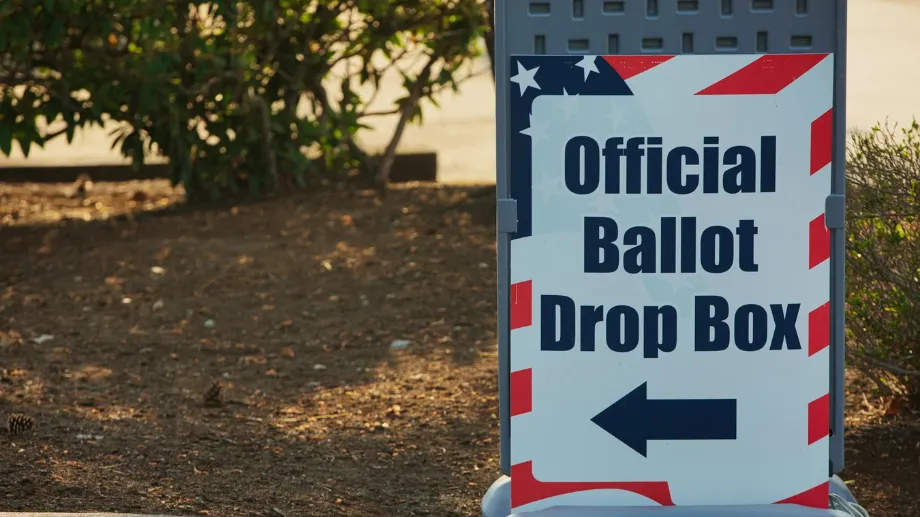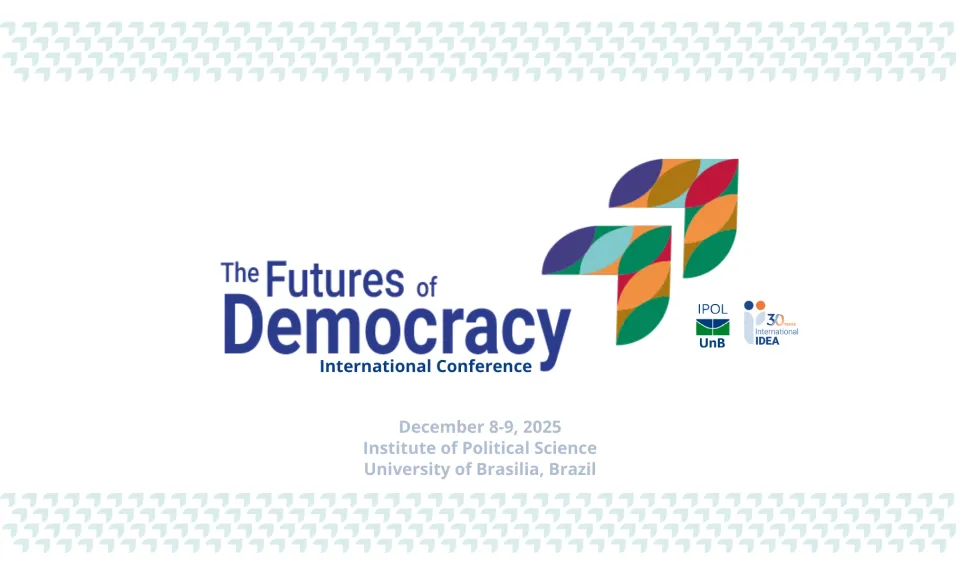How the US stacks up against global voting by mail trends

Ahead of the Tuesday, November 5 general elections in the United States, some aspects of the US electoral system stand out globally, particularly in its innovations to make voting more accessible, such as through postal voting.
Several terms are used in the United States to describe different voting forms. Absentee voting traditionally refers to voting methods available to people who cannot make it to a polling place on Election Day. The voter can either mail the ballot or drop it off in-person. Voting by mail is when voters can request and cast mail ballots. The terms tend to be used interchangeably in the US. All mail (or mostly mail) elections are when all registered voters automatically receive their ballots by mail and can drop them off by mail or in-person.
Absentee voting/voting by mail started to be provided as an option in the United States in the late 1800s for non-military, in-country voters who had reasons for not being able to vote on election day, such as work or serious illness. In the 1980s, California became the first state to allow absentee voting for any reason, including voter convenience.
The National Conference on State Legislatures (NCSL) identifies more than half of states (28 states) as making no-excuse absentee/mail voting available to voters. Of these, 8 states allow all-mail elections (Vermont only for the general elections + the District of Columbia), Oregon, California, Colorado, Hawaii, Nevada, Utah, Vermont and Washington). 19 per cent of the US voting-eligible population lives in states that conduct all-mail elections. 15 states (and Puerto Rico and the Virgin Islands) allow absentee/mail voting with an excuse.
Ten states begin mailing ballots to voters more than 45 days before the election, while 11 send them out 45 days before and 14, 30-45 days before and 14 less than 30 days before election day. In states hit by hurricanes Helene and Milton in 2024 (North Carolina and Florida), a number of Special Voting Arrangements have been expanded to facilitate voting in hard-hit areas. A week before the elections, the US Postal Service said it had reopened all its mail processing centers in both states.
All states, by federal law, are required to send absentee ballots to military and overseas voters for federal elections. However, in-country postal voting is regulated by each state, some of which leave the decision up to each county. The differences in each state’s postal voting differ in how postal votes are verified, how ballots are collected, when votes are processed and counted, and how results are reported.
Mail/absentee voting has increased in the past decades in the United States, from 8 per cent of ballots cast in 1996 to 32 per cent in 2022. It increased significantly during the pandemic year of 2020 (to 43 per cent).
Fewer and fewer voters vote in-person on election day in the United States given the special voting arrangements options that exist (including absentee/mail and in-person early voting). The share of election day in-person votes has decreased from 89 per cent in 1996 to half of voters in 2022. The figure declined to 31 per cent during the pandemic year of 2020.
Mail voting has become a controversial issue in recent years in the United States, with critics arguing that postal voting could increase the risk of fraud such as ballot tampering or impersonation (data shows that this is very rare), while supporters emphasize that it expands voter access, particularly for those unable to vote in person due to health, travel, or other reasons. The debate intensified during the COVID-19 pandemic, with differing opinions on the balance between safeguarding elections and ensuring broad voter participation. Since 2024, at least 19 states have new mail voting restrictions in place for the first time in a presidential election, citing concerns with the electoral system and to prevent fraud—despite data-backed evidence supporting fraud concerns.
So how common is postal voting in the rest of the world? And what are the issues to look out for? International IDEA’s Special Voting Arrangements (SVA) Handbook looks into some of these issues in a global comparative perspective.
The SVA Handbook explains that in other countries the term ‘absentee voting’ can have other meanings, for example voting in person at a polling station outside the voter’s precinct. The Handbook describes postal voting as a voting method where voters receive and mark their paper ballots in an uncontrolled environment (e.g. home) and then send the filled ballots in a return envelope with their personal details for processing and counting. While postal voting is in principle early voting, it differs in that the vote can be physically submitted remotely by the voters themselves. The term "postal" refers to the postal service, historically the main method for sending and returning ballots. Today, voters can often access ballots electronically, print them, and return them in person, via secure dropbox (inside post offices or in other places), or by mail.
The SVA handbook identifies postal voting as a convenient option for voters who may be unable to cast their ballot in person on election day. The advantages of postal voting include a reduced cost to election day, as less poll workers need to be recruited and trained; less need for multiple polling facilities; increased voter turnout and voter inclusion; the ballot posting process alerts election officials when voter information is out of date and should be updated. Some disadvantages to postal voting include possible voter coercion if filling in a ballot from a shared household or public place; relying on the postal service if no drop boxes or drop-off locations are available; potential voter fraud should a signature not match a voter ID card; confusion on voting deadlines as compared to going in-person on a specific day.
International IDEA has identified 32 countries in the world that allow postal voting, of which 11 allow it for all voters, and 21 for some voters.
Countries with in-country postal voting for all voters
*variations by state. See NCSL for an overview by state. |
International IDEA’s survey found postal voting for in-country voters to be more common in Asia, Europe and Oceania. Europe has the largest number of countries that make in-country postal voting available to all or some voters. Postal voting is very rarely used in Africa. Following the emergence of the Covid-19 pandemic, postal voting garnered significant interest in many countries as a safer alternative to conventional voting. Over 100 countries allow some form of out-of-country postal voting, though the specifics vary greatly depending on the country's laws and procedures for absentee or external voters.
While only 17 per cent of all countries use in-country postal voting, most countries use a variety of methods to accommodate voters. For example, France does not have in-country postal voting, but they do have postal voting abroad and permit voting by proxy. Sweden also allows postal voting abroad and voting by proxy, as well as early voting. While Ecuador does not allow for out of country postal voting, they do permit online voting for citizens abroad.
During the Covid-19 pandemic, postal voting was scaled up in many countries where this voting arrangement already existed. In many countries, it provided a safe alternative to in-person voting.
When talking about postal voting, the broader discussion is on the role of special voting arrangements, that is alternate ways to vote, which include postal voting, early voting, mobile ballot boxes, and proxy voting. Postal voting is not new, not universal, nor the only option for those who cannot cast a ballot on election day, whether voters are living abroad, unable to get to the polls, or other reasons.





